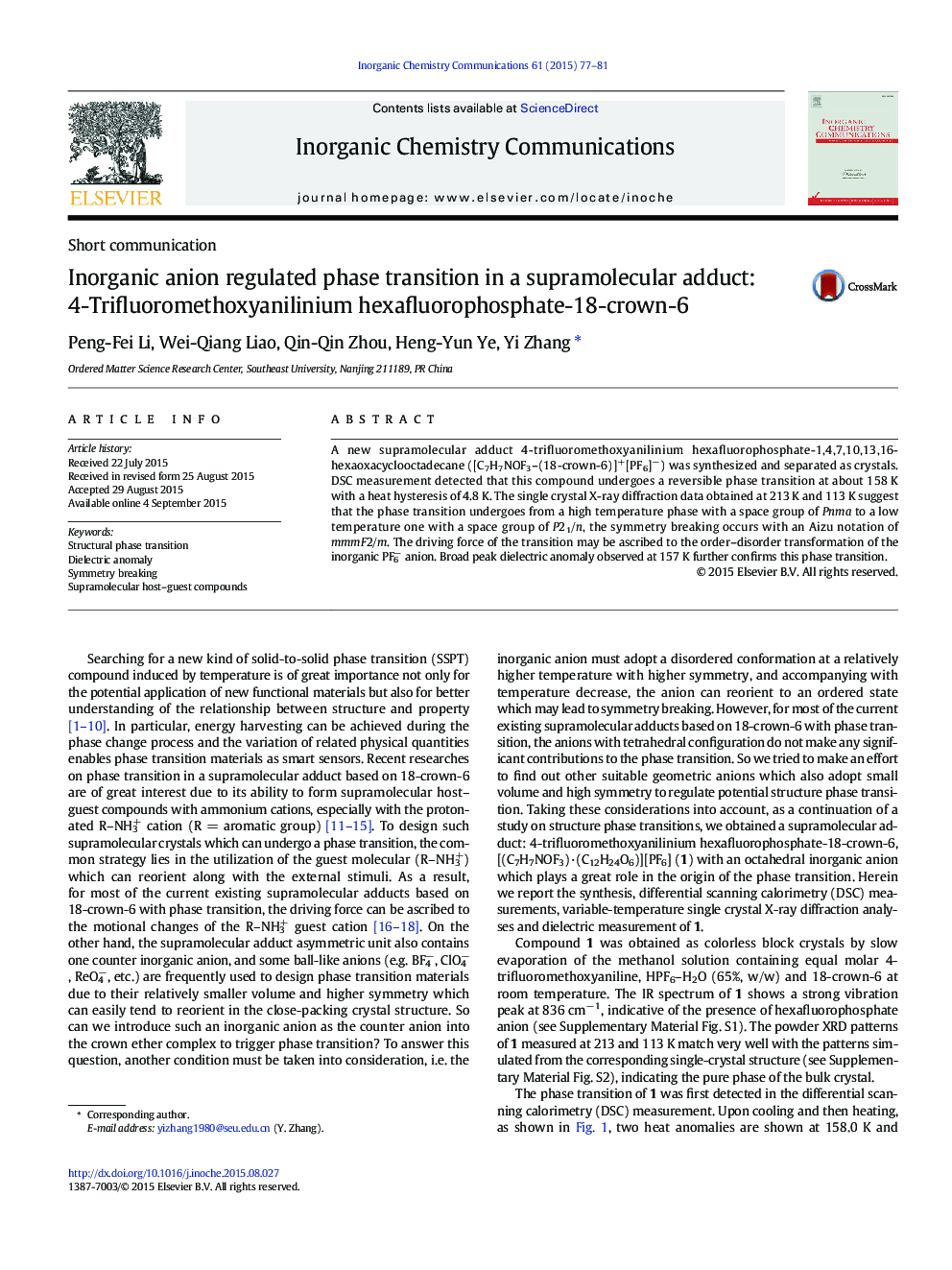| Article ID | Journal | Published Year | Pages | File Type |
|---|---|---|---|---|
| 1301367 | Inorganic Chemistry Communications | 2015 | 5 Pages |
•One reversible phase transition supramolecular adduct is synthesized.•DSC measurement detected the phase transition point of 158 K.•Distinct dynamic behavior of the inorganic anion maybe the driving force for the phase transition.
A new supramolecular adduct 4-trifluoromethoxyanilinium hexafluorophosphate-1,4,7,10,13,16-hexaoxacyclooctadecane ([C7H7NOF3–(18-crown-6)]+[PF6]−) was synthesized and separated as crystals. DSC measurement detected that this compound undergoes a reversible phase transition at about 158 K with a heat hysteresis of 4.8 K. The single crystal X-ray diffraction data obtained at 213 K and 113 K suggest that the phase transition undergoes from a high temperature phase with a space group of Pnma to a low temperature one with a space group of P21/n, the symmetry breaking occurs with an Aizu notation of mmmF2/m. The driving force of the transition may be ascribed to the order–disorder transformation of the inorganic PF6− anion. Broad peak dielectric anomaly observed at 157 K further confirms this phase transition.
Graphical abstractOne reversible phase transition supramolecular adduct is synthesized. DSC measurement detected the phase transition point of 158 K. The single crystal X-ray diffraction data obtained at 213 K and 113 K suggest that the phase transition undergoes from a high temperature phase with a space group of Pnma to a low temperature one with a space group of P21/n. Distinct dynamic behavior of the inorganic anion maybe the driving force for the phase transition.Figure optionsDownload full-size imageDownload as PowerPoint slide
